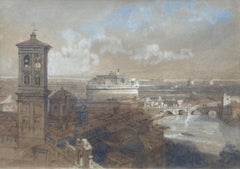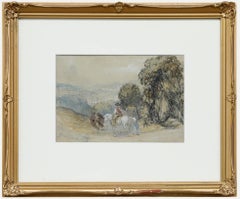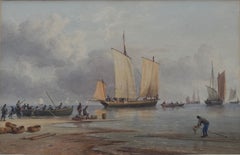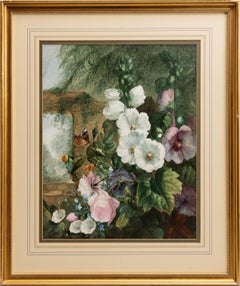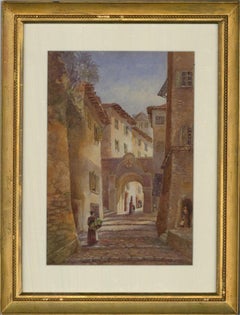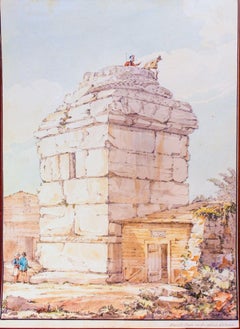David Roberts Drawings and Watercolor Paintings
David Roberts was born outside of Edinburgh, Scotland. At age 10 he became a house painter’s apprentice. He continued painting houses and, eventually, theater scenes in Edinburgh and then in London. Roberts’ friend, J.M.W. Turner, recognized his artistic talent and encouraged him to become a full-time artist.
In 1839 Roberts traveled to Egypt and then in 1840, through the Holy Land, concluding in Jerusalem. Upon his return to England, F.G. Moon agreed to publish lithographs created by Louis Haghe from Roberts’ sketches and watercolors. This publication was highly acclaimed and very popular for its esthetic quality, its historical and topographical accuracy, and Roberts’ dramatic depiction of his scenes. Queen Victoria and Charles Dickens were among the subscribers who collected his works. Roberts’ and Haghe’s duotone lithographs, often colored, remain extremely sought after today and have been rising steadily in value.
Find original David Roberts paintings and prints on 1stDibs.
Mid-19th Century Victorian David Roberts Drawings and Watercolor Paintings
Paper, Watercolor
19th Century David Roberts Drawings and Watercolor Paintings
Watercolor
19th Century Victorian David Roberts Drawings and Watercolor Paintings
Paper, Watercolor
Late 19th Century Naturalistic David Roberts Drawings and Watercolor Paintings
Paper, Watercolor
Early 19th Century Victorian David Roberts Drawings and Watercolor Paintings
Paper, Watercolor
2010s Contemporary David Roberts Drawings and Watercolor Paintings
Ink, Watercolor, Archival Paper
Early 1900s Pre-Raphaelite David Roberts Drawings and Watercolor Paintings
Watercolor, Paper
Late 19th Century Victorian David Roberts Drawings and Watercolor Paintings
Paper, Watercolor
Mid-19th Century Victorian David Roberts Drawings and Watercolor Paintings
Paper, Watercolor, Gouache
1890s Victorian David Roberts Drawings and Watercolor Paintings
Gold
Late 19th Century Victorian David Roberts Drawings and Watercolor Paintings
Paper, Watercolor
Late 19th Century Victorian David Roberts Drawings and Watercolor Paintings
Paper, Watercolor
1920s David Roberts Drawings and Watercolor Paintings
Watercolor, Paper
Mid-19th Century Victorian David Roberts Drawings and Watercolor Paintings
Paper, Watercolor
Mid-19th Century David Roberts Drawings and Watercolor Paintings
Watercolor
1830s Modern David Roberts Drawings and Watercolor Paintings
Watercolor
19th Century Impressionist David Roberts Drawings and Watercolor Paintings
Paper, Watercolor
